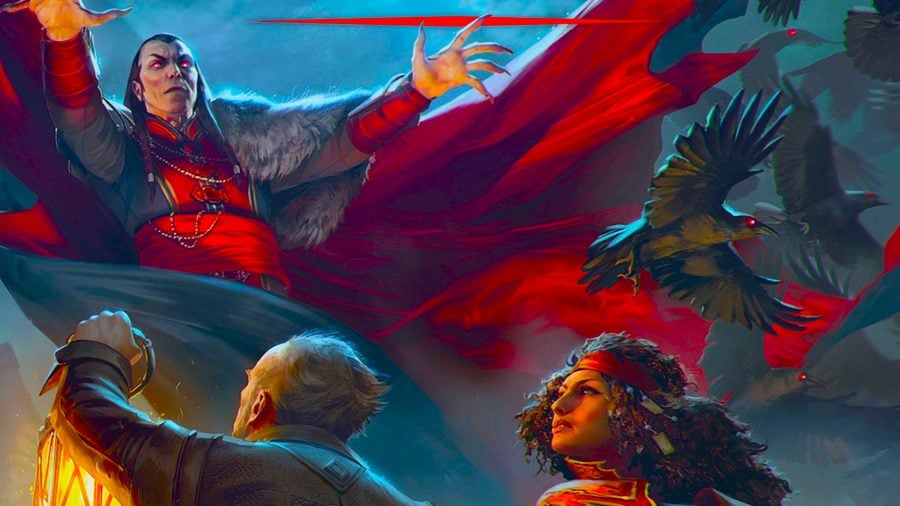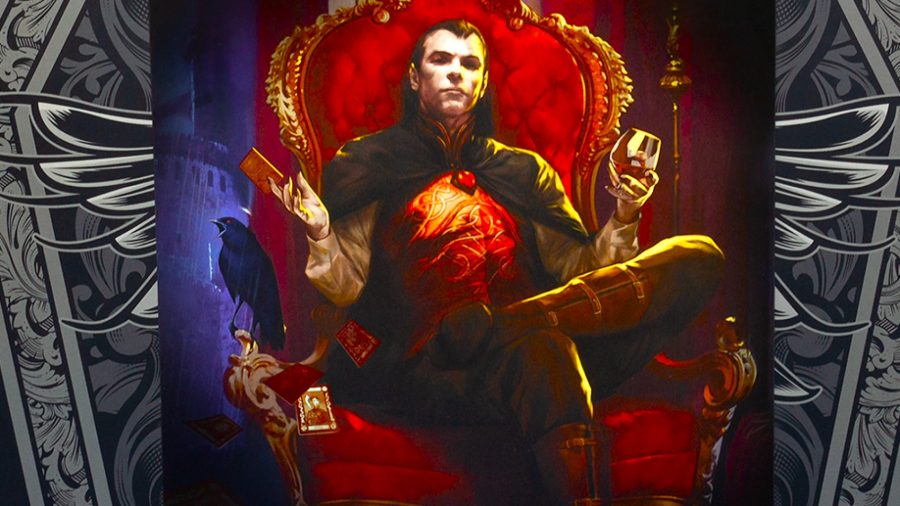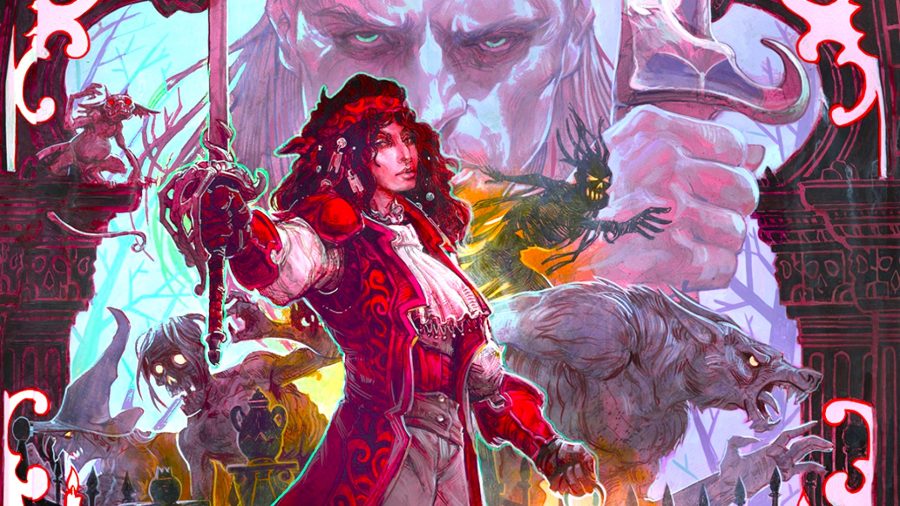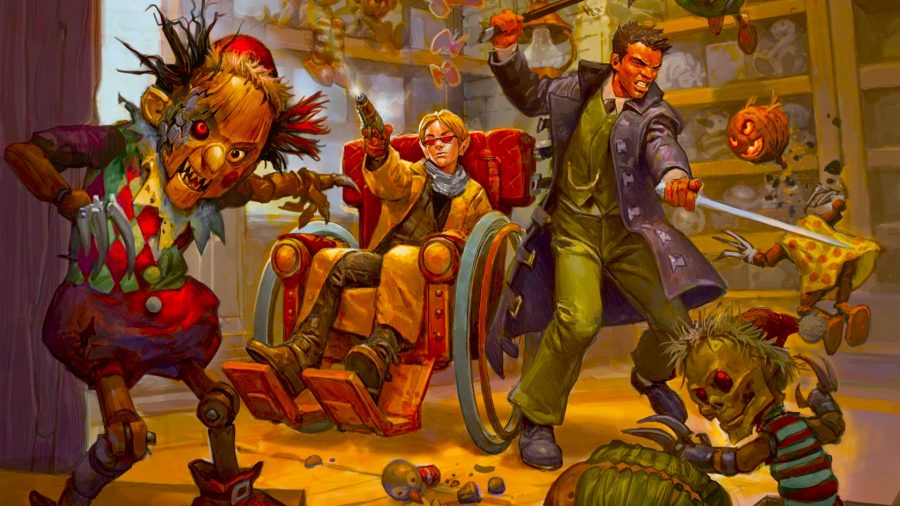Over the years, Dungeons and Dragons has proven malleable enough to suit many genres. You’ve got DnD settings like Spelljammer for all your naval SciFi needs, and Dark Sun scratches that post-apocalyptic itch. But one particular genre of D&D has proven so popular, its main setting has been a mainstay in every edition of D&D – we’re talking about Ravenloft, the home of Gothic horror in D&D.
Ravenloft, also known as The Land of Mists or The Demiplane of Dread, is found floating around the grey, dismal D&D plane Shadowfell. Thanks to living mists and the whims of mysterious entities called the Dark Powers, Ravenloft’s shape and size are often changing. This is because the demiplane has a tendency to swallow people up. Beings who have committed great evils are often transported to (and trapped in) their own Ravenloft domain, but many others fall prey to the mists surrounding Ravenloft – and very few ever get out.
Ravenloft was first created by Dragonlance creators Laura and Tracy Hickman in 1983, and it’s still popular enough to warrant multiple 5E D&D books. If you’re thinking about taking your D&D campaign somewhere more horrific, this guide will walk you through everything you need to know about Ravenloft to get started.
Before we journey into the dark, though, a quick summary. Here’s your guide to Ravenloft:

Ravenloft domains
As we mentioned earlier, Ravenloft is a collection of domains floating around Shadowfell, linked by a mysterious, moving mist. Each domain is designed to imprison a particular Darklord – these are beings of notable evil who tend to be based on tropes and traditional figures from Gothic horror.
Van Richten’s Guide to Ravenloft (the book for all your Ravenloft 5E needs) lists forty Domains of Dread, and it also includes tips for creating domains of your own. Here are some of the Ravenloft domains you might want to travel to:
Barovia – A land of dense, wolf-prowled forest and unforgiving mountains that houses Castle Ravenloft – as well as its Dracula-inspired inhabitant, Count Strahd von Zarovich.
Darkon – Abandoned by its lich ruler Azalin Rex, Darkon is now a land of crumbling cities and shambling undead, split into regions by a hungry, devouring mist.
Lamordia – A world of polluted cities and frozen bogs, Lamordia is home to the Frankenstein-esque Dr Viktra Mordenheim – as well as a slew of other morally destitute innovators creating golems, homunculi, and other flesh-based automatons.
Borca – While the common folk of Borca suffer in poverty, the land’s noble families have complete control of the world before them. Two Darklords lead this land of corruption and apathy – Ivana Boritsi and Ivan Dilisnya, fond of poisoning and stalking respectively.
The Carnival – The Carnival has the ability to travel to other domains and lands, bringing tragedies along with garish colours and two-penny sideshows. Its Darklord isn’t a who, but a what – Nepenthe is a glowing, hateful holy avenger longsword wielded by The Carnival’s leader.

Strahd
Count Strahd von Barovich is a figure so integral to Ravenloft that he deserves his own, more substantial introduction. Once a brutal military conqueror, Strahd spent his human years with his family in Ravenloft, the castle he built. After murder, brotherly betrayal, and plenty of blood-drinking, a pact with the Dark Powers of Ravenloft ultimately earned Strahd a place in the very first of the Domains of Dread – where he became one of the most feared names in the Forgotten Realms.
Make it plane: Here’s a guide to other D&D planes
You can learn more about the vampiric Strahd (and even face him in battle) in the D&D 5E adventure Curse of Strahd. This is based on Tracy and Laura Hickman’s original 1983 adventure module, so there’s plenty of classic Ravenloft to gorge your vampire fangs on.

Ravenloft races
Rather than D&D races, Van Richten’s Guide to Ravenloft introduces ‘lineages’. Certain remarkable (or horrific, depending on who you ask) events can cause player-characters to change – to the point where their original race is unrecognisable and they take on the features of a lineage instead.
A lineage often replaces a character’s race
You could become a Dhampir, an undead-like creature that shares the vampire’s speed, darkvision, and life-draining bite; or you might become a Hexblood, a being imbued with magics granted by witches, Fey, or eldritch beings; lastly, there’s the Reborn, someone dead but somehow still alive – though their scars, stitches, and ghostly features betray their brush with eternal rest. Each of these lineages comes with its own traits, origins, and ties to a particular Domain of Dread.
As well as these lineages, there are plenty of NPC groups travelling through Ravenloft’s mists – some of which you might want to adapt for a character. Perhaps the most famous of these is the Vistani, a travelling community with clear (if often insensitive) ties to the real-life Roma. Alongside the Vistani, Ravenloft is populated by a wereraven society known as the Keepers of the Feather, a group of valiant knights known as The Circle, as well as various churches or cultist groups dedicated to worshipping the strange, dark powers at work in Ravenloft.

Ravenloft monsters
Van Richten’s Guide to Ravenloft recommends making your standard D&D monsters more horrible by tinkering with their stat blocks. While this might give your players a nasty shock, there are also plenty of unique creatures haunting Ravenloft that are guaranteed to get some spines tingling.
Here are just a few of the monstrosities lurking in Ravenloft:
Bodytaker Plant – This is a huge, malicious plant that’s able to tangle its prey up in thick vines. It drags victims into its gaping pod – where the poor thing usually dies and emerges as the podling of a new Bodytaker Plant.
Boneless – Humanoids that meet such brutal ends as crushing or skinning may return as a Boneless, a flopping mass of skin that’s able to slide under doors and wrap itself around the living with a crushing grip.
Carrionette – Sometimes, when someone wishes hard enough, a beloved toy can come to life. And sometimes, the toy is inhabited by a Carrionette, who uses a silver needle to trade places with a humanoid soul – which becomes trapped in the toy in its place.
Dullahan – This is D&D’s answer to the Headless Horseman – a vengeance-consumed spirit that supposedly hunts pieces of its former head, its living relatives, or a bejewelled helmet.
Nosferatu – Yes, that Nosferatu. These are vampires, but with none of the charisma and all the gross features cranked up to 11. It can also vomit blood at you in a 15-foot cone – nasty.
Source: Wargamer




